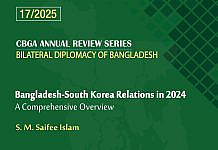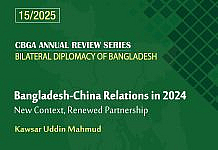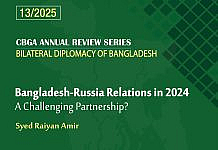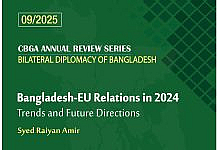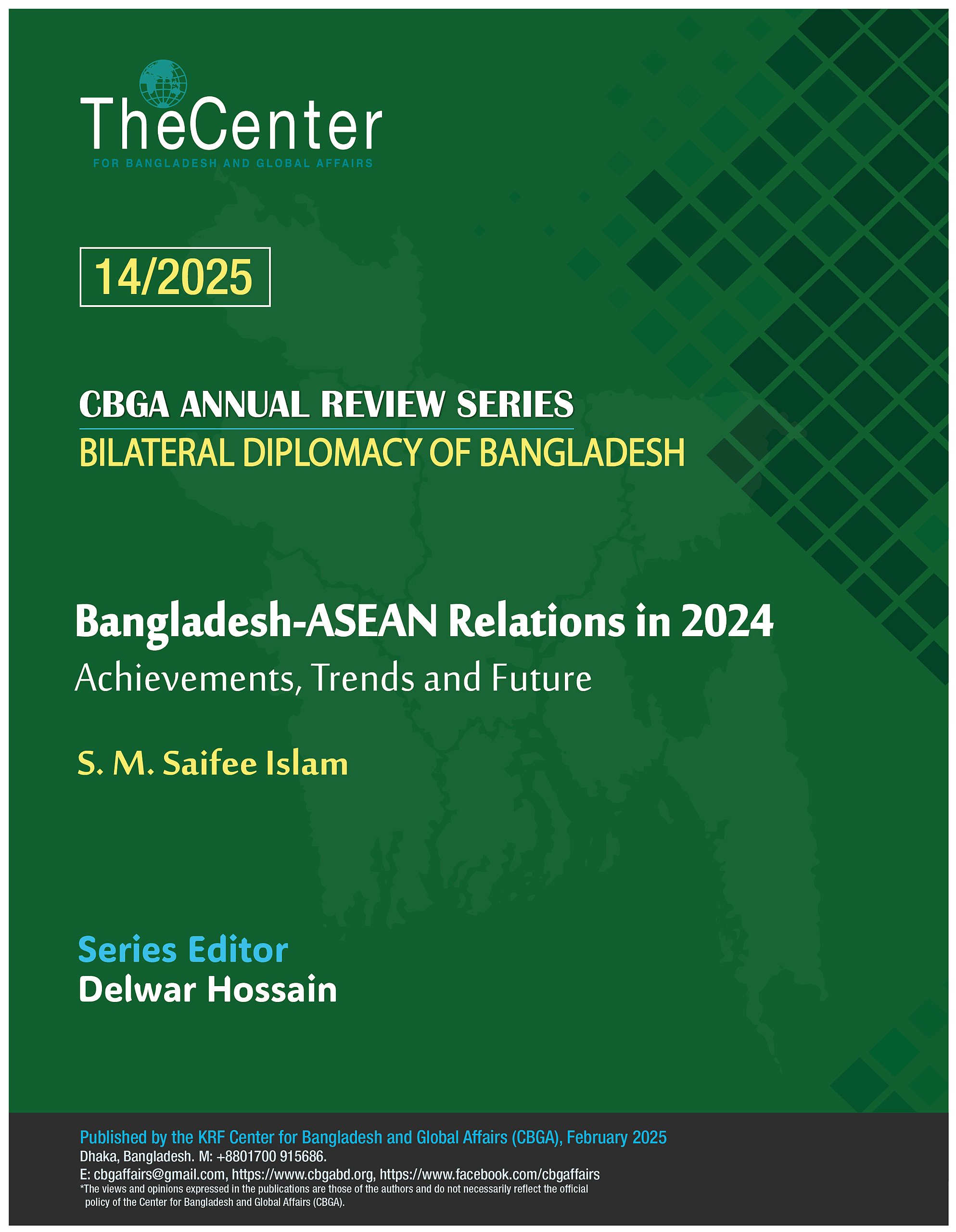
Bangladesh’s relationship with the Association of Southeast Asian Nations (ASEAN) has its roots in shared historical ties and mutual aspirations for regional prosperity and stability. Over the decades, both Bangladesh and ASEAN member countries have worked towards fostering economic growth and regional security, recognizing the importance of collaboration in an increasingly interconnected world. Historically, Bangladesh has engaged with ASEAN through various dialogues and cooperative initiatives, aiming to bolster economic and cultural ties. This partnership has evolved significantly, driven by Bangladesh’s strategic geographic location and its growing economic potential. As a nation with a rapidly expanding economy and a commitment to trade liberalization, Bangladesh has sought to align itself more closely with ASEAN’s dynamic economic landscape.
In the context of 2024, Bangladesh’s engagement with ASEAN is more crucial than ever. The global landscape is marked by shifting economic power centers and the need for regional alliances to address common challenges such as climate change, security threats, and economic disparities. Bangladesh’s strategic emphasis on infrastructure development, digital transformation, and sustainable growth aligns well with ASEAN’s goals, creating a fertile ground for enhanced cooperation. As Bangladesh continues to position itself as an integral partner to ASEAN, strengthening these relationships can lead to increased trade, investment flows, and cultural exchanges. By capitalizing on the achievements of the past and addressing current trends, Bangladesh and ASEAN can work together towards a more integrated and prosperous future, benefiting from the unique strengths each brings to the table.
Achievements
Bangladesh’s engagement with ASEAN has yielded notable achievements in strategic diplomacy, economic cooperation, and geostrategic connectivity. These accomplishments underscore Bangladesh’s commitment to fostering deeper ties with Southeast Asia. One of the most significant milestones in Bangladesh-ASEAN relations was its accession to the ASEAN Regional Forum (ARF) in 2006. This marked a pivotal moment in Bangladesh’s diplomatic engagement with Southeast Asia, providing a platform to contribute to discussions on regional security, disaster management, and collaborative efforts. Through ARF, Bangladesh has amplified its voice on issues affecting the region while strengthening bilateral ties with key ASEAN member states such as Vietnam, Cambodia, and Malaysia.
Bangladesh’s Push for Sectoral Dialogue Partner Status
In 2024, Bangladesh intensified its diplomatic efforts to attain “Sectoral Dialogue Partner” (SDP) status within ASEAN, emphasizing its role as a bridge between South and Southeast Asia. This aspiration was reiterated during bilateral discussions with Thailand and at the ASEAN Regional Forum (ARF) meeting in July. The Thai Prime Minister expressed strong support for Bangladesh’s candidacy, highlighting the potential for regional connectivity and economic cooperation. The ASEAN Dhaka Committee (ADC) further facilitated dialogue by organizing events to commemorate ASEAN’s 57th anniversary and addressing trade imbalances between Bangladesh and ASEAN nations. Additionally, the ADC extended its efforts to humanitarian initiatives, including relief for flood victims in Bangladesh.
Active Participation in ASEAN-Led Platforms
Although not a formal member, Bangladesh engaged actively in ASEAN-led dialogues, including the ARF and BIMSTEC, to address shared regional challenges. During the 44th ASEAN Summit held in Vientiane, Laos, in October, Bangladesh contributed to discussions on the Rohingya refugee crisis and regional connectivity projects. Informal meetings hosted by Thailand in December also addressed critical issues such as border security and transnational crime involving Myanmar. These discussions underscored Bangladesh’s growing role in regional diplomacy, especially in advocating for Rohingya repatriation and ensuring regional stability amid ongoing tensions in Myanmar.
Strengthening Bilateral Ties and Overcoming Challenges
Bangladesh’s high-level visit to Thailand in 2024 resulted in significant bilateral agreements on energy, tourism, customs cooperation, and a letter of intent for a potential free trade agreement. These efforts aimed to deepen economic ties and align Bangladesh more closely with ASEAN frameworks. However, Bangladesh’s aspirations for SDP status faced hurdles, as some ASEAN members expressed concerns about importing additional crises, particularly given the political instability in Bangladesh following domestic upheaval in August 2024. Despite these challenges, Bangladesh remains committed to strengthening its regional partnerships and pursuing deeper engagement with ASEAN.
Recent Trends and Dynamics
Economic Integration: Analysis of Bangladesh-ASEAN Trade Relationship
The trade relationship between Bangladesh and ASEAN countries reveals a significant imbalance, with Bangladesh importing far more than it exports. In 2023, Bangladesh’s imports from ASEAN countries accounted for approximately 20% of total imports, while exports to ASEAN amounted to only $2.64 billion, contributing to a trade deficit of $10.07 billion. This imbalance stems from Bangladesh’s reliance on importing essential raw materials, machinery, and consumer goods from ASEAN nations. On the other hand, Bangladesh’s export portfolio to ASEAN remains constrained by limited product diversification and quality, primarily consisting of textiles and agricultural goods.
| Country | Exports from Bangladesh (USD Million) 2023-2024 | Imports to Bangladesh (USD Million) 2023-2024 | Trade Balance
(USD Million) |
| Singapore | 620 | 4,418 | -3,798 |
| Malaysia | 450 | 3,900 | -3,450 |
| Indonesia | 310 | 3,500 | -3,190 |
| Thailand | 290 | 2,800 | -2,510 |
| Vietnam | 400 | 2,200 | -1,800 |
| Philippines | 150 | 1,100 | -950 |
| Myanmar | 70 | 600 | -530 |
| Brunei | 5 | 50 | -45 |
| Cambodia | 20 | 40 | -20 |
| Laos | <5 | <10 | Minimal |
Sources: Made by Author from: https://www.tradeclub.standardbank.com/portal/en/market-potential/bangladesh/trade-profile, https://oec.world/en/profile/country/bgd
Despite the trade deficit, Bangladesh holds significant untapped export potential to ASEAN countries, with estimates suggesting 40-60% of potential markets remain underutilized. Structural inefficiencies, such as inadequate logistics, lack of market access, and high tariff barriers, have hindered the country’s ability to penetrate these markets effectively. Moreover, the absence of Free Trade Agreements (FTAs) or Preferential Trade Agreements (PTAs) with ASEAN exacerbates these challenges, restricting competitiveness in the region.
Bangladesh and ASEAN Trade in Comparison of Total Trade:
| Indicator | Value |
| Total Exports (2023) | $55.8 billion |
| Total Imports (2023) | $88.2 billion |
| Exports to ASEAN (2022) | ~$2.64 billion |
| Imports from ASEAN (2023) | ~20% of total imports |
| Trade Deficit (2023) | $10.07 billion |
Sources:https://oec.world/en/profile/country/bgd, https://www.statista.com/statistics/438371/trade-balance-of-bangladesh/
To reduce the trade deficit and enhance economic integration with ASEAN, Bangladesh must prioritize policy reforms, including pursuing FTAs and PTAs to improve market access and reduce tariff and non-tariff barriers. Additionally, fostering export diversification and improving product quality will be essential to capture a larger share of ASEAN’s market. Enhancing trade infrastructure, implementing technology-driven manufacturing processes, and offering incentives for high-value industries could help bridge the trade gap and unlock the full potential of Bangladesh’s economic ties with ASEAN.
Connectivity
Bangladesh is making significant strides in enhancing its regional connectivity, aiming to fortify its relationships with ASEAN and surrounding areas. Two significant initiatives deserve attention: the Bangladesh-China-India-Myanmar (BCIM) Economic Corridor and the India-Myanmar-Thailand (IMT) Trilateral Highway. The BCIM Economic Corridor, an integral component of China’s Belt and Road Initiative, seeks to forge a connection between Kolkata in India and Kunming in China, traversing through Bangladesh and Myanmar over a distance of 2,800 kilometers. The anticipated corridor promises to significantly boost trade, investment, and cultural exchanges among the four nations involved.
Nevertheless, advancements have been hindered by geopolitical strife, especially the ongoing discord between India and China, alongside the internal turmoil plaguing Myanmar. In a parallel effort, the IMT Trilateral Highway aims to connect India’s Northeast with Thailand through Myanmar. Despite the fact that around 70% of the highway has been completed, ongoing delays continue to plague the project, largely attributed to the political instability in Myanmar and various logistical hurdles that remain unresolved. Bangladesh has shown a keen interest in becoming part of this initiative, acknowledging the significant opportunities it presents for enhancing trade and tourism with Southeast Asia. While these plans are undeniably ambitious, it is crucial to acknowledge the substantial challenges that lie ahead. Resolution of these issues will require not only regional cooperation but also a commitment to political stability.
Diplomatic Maneuverer
Bangladesh is clearly eager to enhance its involvement with ASEAN, as evidenced by its pursuit of Sectoral Dialogue Partner status. Bangladesh’s ambition underscores its pivotal role as a connector between South Asia and Southeast Asia. The nation has consistently highlighted its economic expansion, the potential for regional connectivity, and its proactive involvement in forums such as the ASEAN Regional Forum (ARF) since 2006, all in an effort to bolster its position. Bangladesh’s Foreign Minister has consistently called on ASEAN member states to back this initiative, highlighting the mutual benefits in trade, investment, and security collaboration. Nevertheless, obstacles like the Rohingya refugee crisis and the political turmoil in Myanmar significantly hinder these initiatives.
The principle of non-interference upheld by ASEAN, coupled with the bloc’s reliance on consensus-driven decision-making, continues to hinder the advancement of Bangladesh’s aspirations. Despite the challenges, Bangladesh remains steadfast in its pursuit of deeper integration with ASEAN, emphasizing its strategic position as a vital conduit for interregional trade and connectivity.
Ensuring Security
The dynamics of global security demand a strategic approach that prioritizes partnerships and shared resources. The partnership between Bangladesh and ASEAN in the realm of security is increasingly significant, particularly in the critical domains of counterterrorism and maritime security. In the wake of tragic events such as the 2016 Holey Artisan Bakery attack, Bangladesh has firmly established a policy of “zero tolerance” towards terrorism. This policy is in harmony with the Comprehensive Plan of Action on Counterterrorism established by ASEAN, as outlined in the ASEAN Convention on Counter-Terrorism (ACCT).
Bangladesh’s Anti-Terrorism Unit (ATU) collaborates with regional partners to address the pressing issue of violent extremism, focusing on intelligence sharing and enhancing capacity through various programs. Bangladesh has taken significant strides in maritime security by collaborating with nations such as Australia within the Indian Ocean Rim Association (IORA) framework. Additionally, the country is actively pursuing partnerships with ASEAN members to tackle pressing challenges like piracy and illegal fishing. While these initiatives demonstrate a collective dedication to regional stability, it is evident that a more profound collaboration is essential to navigate the differing national interests that exist within ASEAN.
Looking Ahead: Strengthening Bangladesh-ASEAN Economic Ties
To fully capitalize on its economic partnership with ASEAN, Bangladesh must focus on diversifying its export basket. While textiles and agriculture dominate current exports, sectors like pharmaceuticals, light engineering, and high-value products offer promising avenues for growth. The pharmaceutical industry, in particular, holds significant potential given Bangladesh’s strong manufacturing base and the increasing demand for affordable medicines across Southeast Asia. Additionally, Bangladesh’s textile sector, which is already competitive in global markets, could benefit from enhanced market access through regional trade agreements like the Regional Comprehensive Economic Partnership (RCEP). Joining RCEP could unlock new opportunities for investment, technology transfer, and access to ASEAN’s integrated market, positioning Bangladesh as a key player in the regional supply chain.
Improved Connectivity
Connectivity improvements are essential to turning Bangladesh into a critical transit hub between South Asia and Southeast Asia. Infrastructure projects, such as the Asian Highway, have the potential to connect Bangladesh with key ASEAN markets, facilitating smoother trade flows and enhancing regional integration. In addition to roads and rail, bolstering port infrastructure and logistics services will be crucial to reducing trade bottlenecks and improving Bangladesh’s competitiveness in global markets. Resolving border disputes with Myanmar is also critical for realizing these connectivity goals, as it would not only improve bilateral trade but also ease transportation routes for goods passing through Bangladesh to Southeast Asia. Strengthening these physical links would provide a direct path for Bangladesh to engage more robustly with the ASEAN region.
Geopolitical Challenges
Bangladesh faces several geopolitical challenges that could impact its future relations with ASEAN countries. One of the most pressing issues is the Rohingya crisis, which remains a significant hurdle in its relationship with Myanmar and has implications for its broader diplomatic standing in ASEAN. Addressing this humanitarian crisis will be crucial for Bangladesh to gain wider acceptance within the ASEAN framework and strengthen its position in the region. At the same time, Bangladesh must balance its relationships with major powers like China and India, whose strategic interests often diverge. While China has become an important partner through investments and infrastructure projects, particularly under the Belt and Road Initiative (BRI), India’s influence in the region is undeniable. Navigating these relationships will be key to maintaining Bangladesh’s sovereignty and enhancing its diplomatic leverage in the ASEAN context.
Institutional Engagements
Beyond formal trade agreements, Bangladesh can deepen its ties with ASEAN through active participation in regional forums such as the ASEAN Regional Forum (ARF), the Bay of Bengal Initiative for Multi-Sectoral Technical and Economic Cooperation (BIMSTEC), and the East Asia Summit. These platforms provide opportunities for dialogue on security, economic cooperation, and regional stability without requiring full ASEAN membership. Engaging in these forums will help Bangladesh influence regional policymaking and align its priorities with ASEAN’s broader objectives. Furthermore, developing human resource capacity to manage cross-border projects and regional partnerships will be essential for sustaining long-term collaborations. By investing in education, training, and institutional development, Bangladesh can position itself as a key player in regional initiatives, ensuring that its integration with ASEAN is both robust and sustainable in the coming years.
To conclude, Bangladesh-ASEAN relations have made notable progress but remain underutilized relative to their potential. By addressing trade imbalances, enhancing connectivity, resolving geopolitical challenges, and leveraging its strategic location, Bangladesh can play a pivotal role as a bridge between South Asia and Southeast Asia. While full ASEAN membership may be a distant goal due to existing challenges, deepening economic diplomacy through multilateral platforms offers significant opportunities for mutual growth.
– S. M. Saifee Islam is a Research Associate at the KRF Center for Bangladesh and Global Affairs (CBGA).



